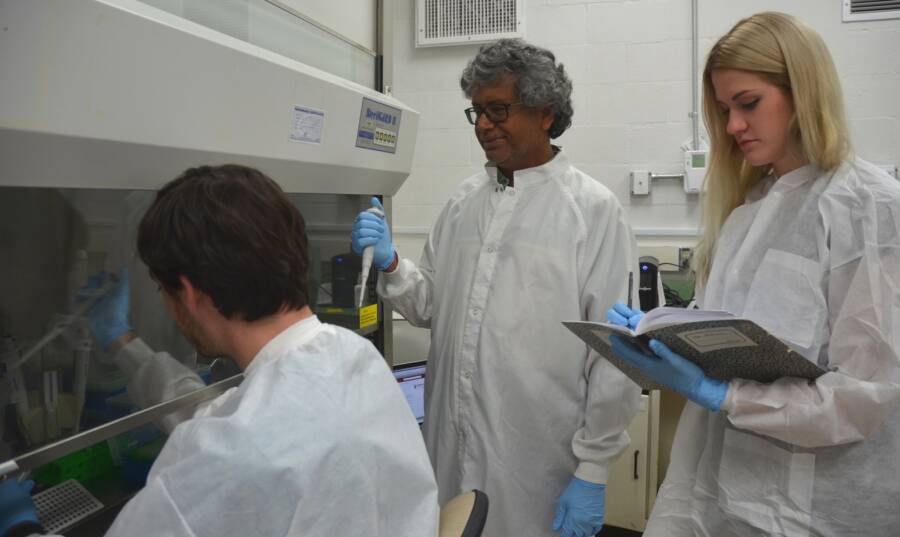
The sun is still a burning mystery. That may be about to change.
Nadia Drake
On Sunday evening, a rocket is scheduled to streak through Florida’s nighttime sky, ferrying a spacecraft on a first-of-its-kind adventure to the sun.

© Illustration by ESA/ATG medialab
An illustration shows the ESA Solar Orbiter facing the sun during its closest approach to the star.
Even though our home star smolders every day in our skies, humans have only ever seen the sun from one perspective: face-on, from within the plane of the planets. The European Space Agency’s Solar Orbiter, or SolO, is about to change that, as it is designed to perform a detailed reconnaissance of the sun that will allow it to see the star’s previously invisible polar regions.

© Image by NSO/NSF/AURA
This image from the Daniel K. Inouye Solar Telescope released in February 2020 is the highest resolution image of the sun’s surface ever taken. It shows the huge cell-like structures created by the violent motions as heat from inside the star is transported upward.
From this unique vantage point, SolO’s suite of 10 instruments will help uncover how the star sends streams of energetic particles called the solar wind throughout our planetary system. It will also help answer what controls the sun’s 11-year magnetic cycle, which varies in intensity and creates unanticipated fluctuations in solar activity.
“We fundamentally really don’t understand that,” says ESA’s Daniel Müller, SolO project scientist. “Hopefully, we’re filling in that gap with Solar Orbiter.”
Untangling these drivers isn’t simply an academic matter; it can improve public safety on Earth. Changes in the sun’s magnetic activity factor into the powerful, energetic solar eruptions that can knock out power grids, bring down satellites, and prove lethal to humans in outer space. Right now, humans are not so good at predicting when or how strongly those eruptions will affect the planet.
“Understanding these fundamental processes, the physical processes taking place in the inner region of the solar atmosphere, is really going to help us,” says Holly Gilbert, NASA’s deputy project scientist for SolO.
SolO is launching during an especially hot moment in solar monitoring; it’s just one of several new projects set on staring at the sun, offering opportunities for even more robust scientific exploration of our home star.
“It is just a really good time to be a heliophysicist,” says Nicola Fox, NASA’s heliophysics division director. “Having this sort of coordinated push makes huge, huge changes in the amount of science you can do.”
Golden era for sun study
You may have noticed the sun is very hip right now.
Last week, the ground-based Daniel K. Inouye Solar Telescope, or DKIST, released a mesmerizing close-up of the solar surface. In movie form, those images reveal the sun’s skin to be a slowly bubbling, patchworked surface, with plasma cells the size of Texas.
And in December, NASA’s Parker Solar Probe released the first of its observations, collected while orbiting extremely close to the sun. This week, a special issue of The Astrophysical Journal unveiled four dozen additional studies about the mission. Among the trove are the first observations of “rogue” magnetic waves, the first hint of a dust-free environment immediately around the sun, the first glimpse of a pristine ejection of particles, and that stunning finding that the solar wind is speeding sideways much, much faster than expected, which can dramatically affect stellar evolution.
Parker Solar Probe is making these observations as it dives into the sun’s corona, an enigmatic sheath of superhot, million-degree gas and particles. Over its seven-year journey, it will swing closer and closer to the sun during each orbit, eventually coming within four million miles of our star’s blazing surface.
The Parker Solar Probe will be able to partner with the new SolO spacecraft, though the latter won’t come as close to the sun.
After SolO launches, it will swing by Earth and Venus, gathering gravitational assists from the planets that will sling it closer to the sun. Over the next five years, Venus’s gravity will propel the probe into an inclined orbit that will bring the solar poles into view, with the first glimpse of the poles expected in 2025.
“Each orbit will get higher and higher, so in a way we’re kind of unwrapping the polar regions, bit by bit,” Gilbert says.
Together, the spacecraft pair will assemble high-resolution observations of what could be the most dynamic, extreme environment in the solar system. Circling the sun in tandem, the two spacecraft will watch how the pristine solar wind, or the particles exhaled endlessly by the sun, evolves as it blusters into the solar system. And SolO comes with an onboard camera that can snap images of the sites Parker Solar Probe is flying through.
“It will be a really great synergy,” Gilbert says. “It’ll give us that contextual info, and then Parker will be there, measuring the actual plasma as [the SolO] orbiter images it.”
As the two orbiters buzz the sun, DKIST—from its Hawaiian perch atop Haleakalā on Maui—will see the solar surface in more detail than either of the farther-flung spacecraft. That’s partly because of its 13-foot mirror, which is far larger than even the Hubble Space Telescope’s.
“The things DKIST can do, we could never do from space,” Müller says. “It has unprecedented resolution in the visible part of the spectrum.”
It’s no coincidence that the sun is finally getting its day to shine, says Kelly Korreck, a heliophysicist at the Harvard-Smithsonian Center for Astrophysics, and one of the principal investigators for an instrument aboard the Parker Solar Probe. These new observatories, both ground- and space-based, culminate decades of planning and technological development, without which such explorations would have been impossible.
“The technology has caught up,” Korreck says, “and we can now do some of these daring, cool missions.”
SolO’s signature science
Meanwhile, SolO’s polar observations could add a crucial, missing piece to the puzzle of the sun’s magnetic cycle. For years, scientists have known that the sun’s activity ebbs and flows over an 11-year period—but theories describing how that works have never been able to match physical observations. One reason for those surprises, Müller says, is that detailed data on the solar polar regions were missing. In the mid-1990s and early 2000s, the Ulysses spacecraft did get a glimpse of the sun’s poles, although from very far away and without an onboard camera.
“We simply don’t know what the poles look like, and we really think we need that data to unravel some of the mysteries of the magnetic cycle,” Müller says. “That’s really been our blind spot.”
With a more comprehensive, global view, scientists should be able to really drill down into the intricacies of those magnetic cycles and the way that energy manifests on the star’s surface. Magnetic loops and waves have the potential to be extremely powerful, with newly discovered “rogue waves” perhaps explaining the mystery of why the corona is hotter than the sun’s surface.
Loops, which arch high above the sun’s surface, are often the sites where solar flares are born. Occasionally, those flares sling supersonic, super-charged blobs of particles into space, called coronal mass ejections, or CMEs. If one of those gusts careens toward Earth, it could be catastrophic.
In 1859, a particularly powerful CME knocked out telegraphs and set Earth’s skies ablaze with auroras so bright they mimicked daylight. Now called the Carrington Event, these types of space weather occurrences are exactly what scientists are hoping to predict as far ahead of time as possible.
With enough warning, vulnerable satellites and power grids could be proactively taken offline, and any humans who happened to be either in orbit or in deep space could take cover.
“We can mitigate that, but we really need to understand when the sun is going to be active, and how that’s going to interact with the Earth’s magnetosphere,” Korreck says. “As we get more and more dependent on satellites for communication, and go to the moon and Mars and become a spacefaring people, we really have to understand the dangers to crew as well as our own electronic assets in space.”
Plus, a more intimate grasp of how the sun works can help inform the prospects for life on planets orbiting sun-like stars.
“The other thing for me that’s really cool about it is just simply: It is a star,” Fox says. “We’re learning about how a star works. And that has applications for other stars in other stellar systems.”

Journey to the Far Side of the Sun (1969) - Rotten Tomatoes
https://www.rottentomatoes.com › journey_to_the_far_side_of_the_sun
Oct 10, 2000 - An American astronaut is selected to lead a British crew to a journey to another planet, hence the title. Colonel Glenn Ross ... Journey to the Far Side of the Sun ... Written By: Gerry Anderson, James Donald, Sylvia Anderson.
Journey to the Far Side of the Sun | Moviepedia | Fandom
https://movies.fandom.com › wiki › Journey_to_the_Far_Side_of_the_Sun
Journey to the Far Side of the Sun (also known as Doppelgänger) was a 1969 Science ... The film was produced by Gerry Anderson, who was best known for ...






